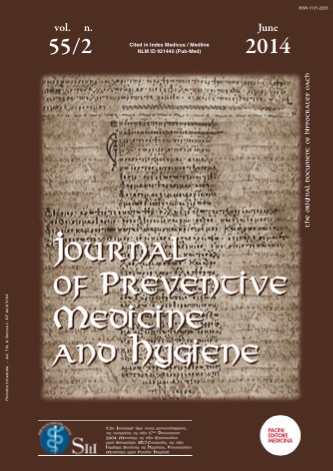Abstract
Objective. To study the knowledge and practice of hand washing among mothers and children of shikharchandi slum of Bhubaneswar, Odisha and to recommend possible measures to improve the current practices. Methodology. Present cross-sectional study was carried out in the Shikharchandi slum located in the Bhubaneswar city of Orissa state in India. 150 women and 80 children were interviewed. Chil- dren questionnaire were prepared to suit to their age and accord- ing to local context. Components of sanitation like food handling and hand washing were covered in this questionnaire. Results. Hand washing before preparing food is being practiced by 85% of women. Of all women interviewed, 77% wash hands before serving food. Only 15% children said soap was available in their school to wash hands. Out of total children interviewed, 76% told that their teachers tell about sanitation and hand washing in the class. Only 5% children told they were consulted by doctor/health worker during last 3 months. As many as 81% children told that they wash their hands before taking food and 19% children said they take their food without washing hands. Though most of the children told that they wash hands before tak- ing food, but only 17.5% told that they use soap for hand washing. Only 29% children told that their teachers check hand washing in school. When asked about critical timing of hand washing, 44% children told about at least two critical timings and 56% were unaware about the critical timings of hand washing. Conclusion. Inadequate knowledge on this among our study par- ticipant is a point of concern. Systematic integration of health and hygiene education in schools through curricular modifications could be an appropriate strategy.References
World Health Organization , author. Better Health for Poor Children. [Accessed August 4, 2009]. Available at: http://www.who.int/child_adolescent_health/documents/a91061/en/index.html.
Curtis VA, Danquah LO, Aunger RV. Planned, motivated and habitual hygiene behavior: an eleven country review. Health Educ Res. 2009;4:655–673.
World Health Organization , author. World Health Statistics. 2009
Murray CJ, Lopez AD. Global mortality, disability, and the contribution of risk factors: Global Burden of Disease Study. Lancet. 1997;349:1436–1442.
Jamison DT, Breman JG, Measham AR, et al., editors. Disease Control Priorities in Developing Countries. 2nd ed. Oxford: Oxford University Press; 2006.
Luby SP, Agboatwalla M, Feikin DR, et al. Effect of handwashing on child health: A randomized controlled trial. Lancet. 2005;366:225–233.
Shahid NS, Greenough WB, Samadi AR, et al. Handwashing with soap reduces Diarrhoea and spread of bacterial pathogen in a Bangladesh village. J Diarrhoeal Dis Res. 1996;14:85–89.
LiKosek M, Bern C, Guerrant RL. The global burden of diarrhoeal disease, as estimated from studies published between 1992 and 2000. Bulletin of the World Health Organization. 2003;81:197–204.
World health organization/UNICEF , author. Diarrhea why children are still dying and what can be done. 2009
Kumar S, Harada H. Field survey on water supply, sanitation and associated health impacts in urban poor communities, a case from Mumbai city, India. Water Sci Technol. 2002;46:269–275.
Ray SK, Dobe M, Maji S, et al. A pilot survey on hand washing among some communities of West Bengal. Indian J Pub Health. 2006;50:227–230.
Ray SK, Zaman FA, Laskar BN. Hand washing practices in two communities of two states of eastern India: An Interventional Study. Indian J Pub Health. 2010;54:126–130.
Lopez-Quintero, Freeman P, Neumark Y. Hand washing among school children in Bogotá, Colombia. Am J Public Health. 2009;99:94–101.
Vivas AP, Gelaye B, Aboset N, et al. Knowledge, Attitudes and Practices (KAP) of hygiene among school children in Angolela, Ethiopia. J Prev Med Hyg. 2010;51:73–79.


